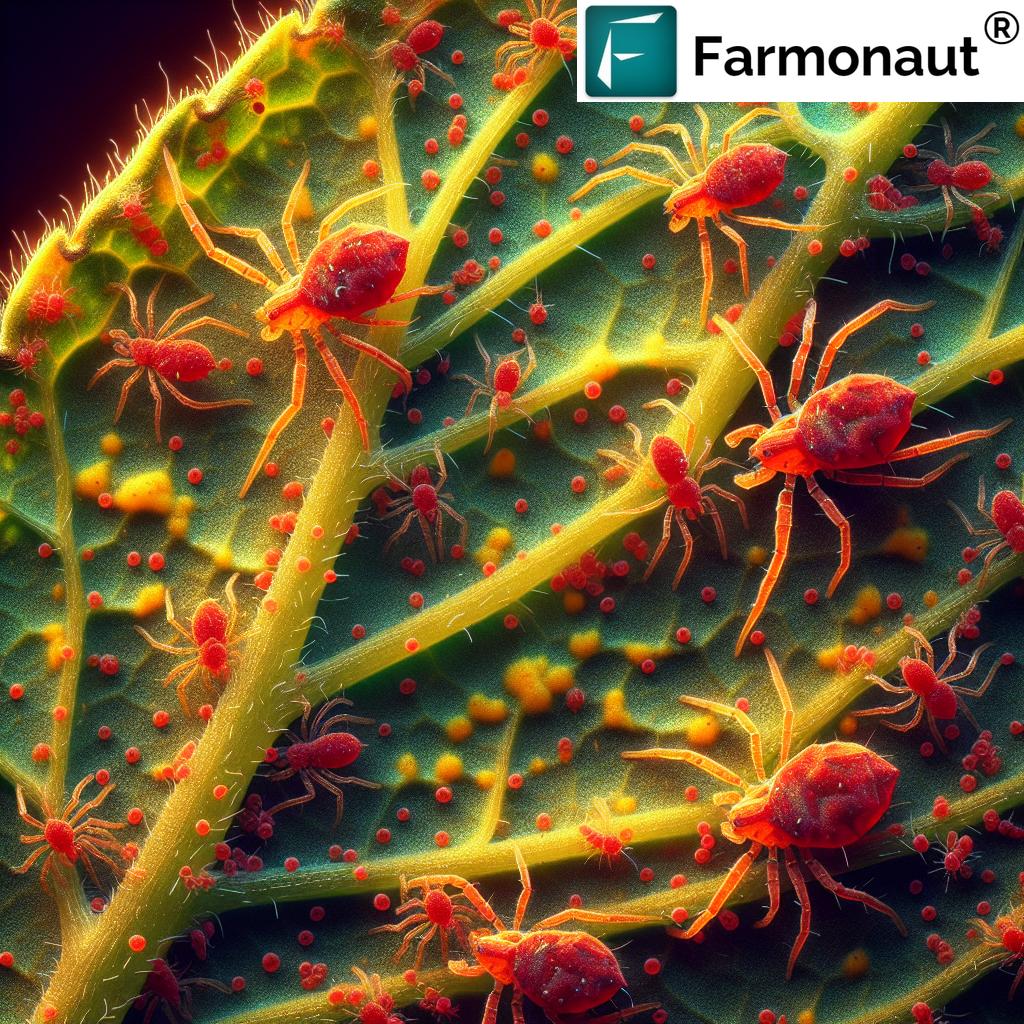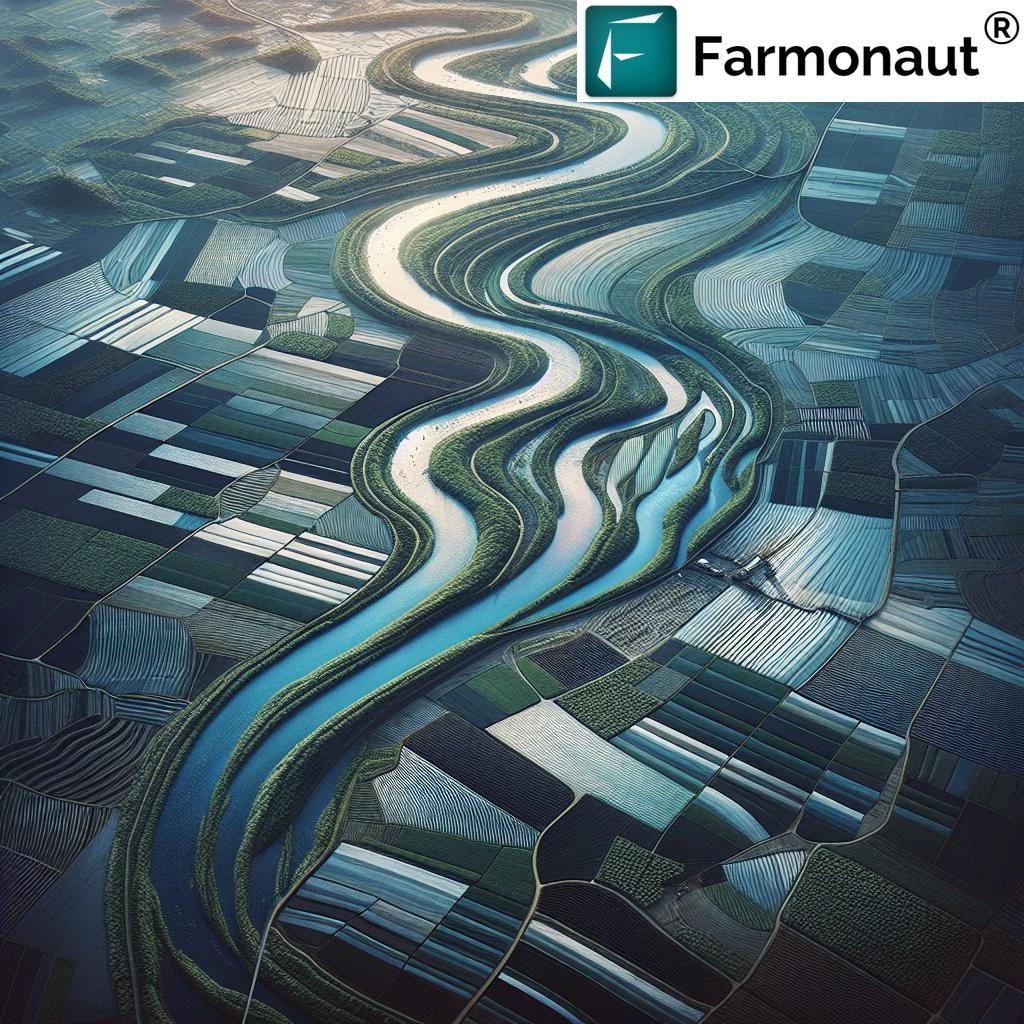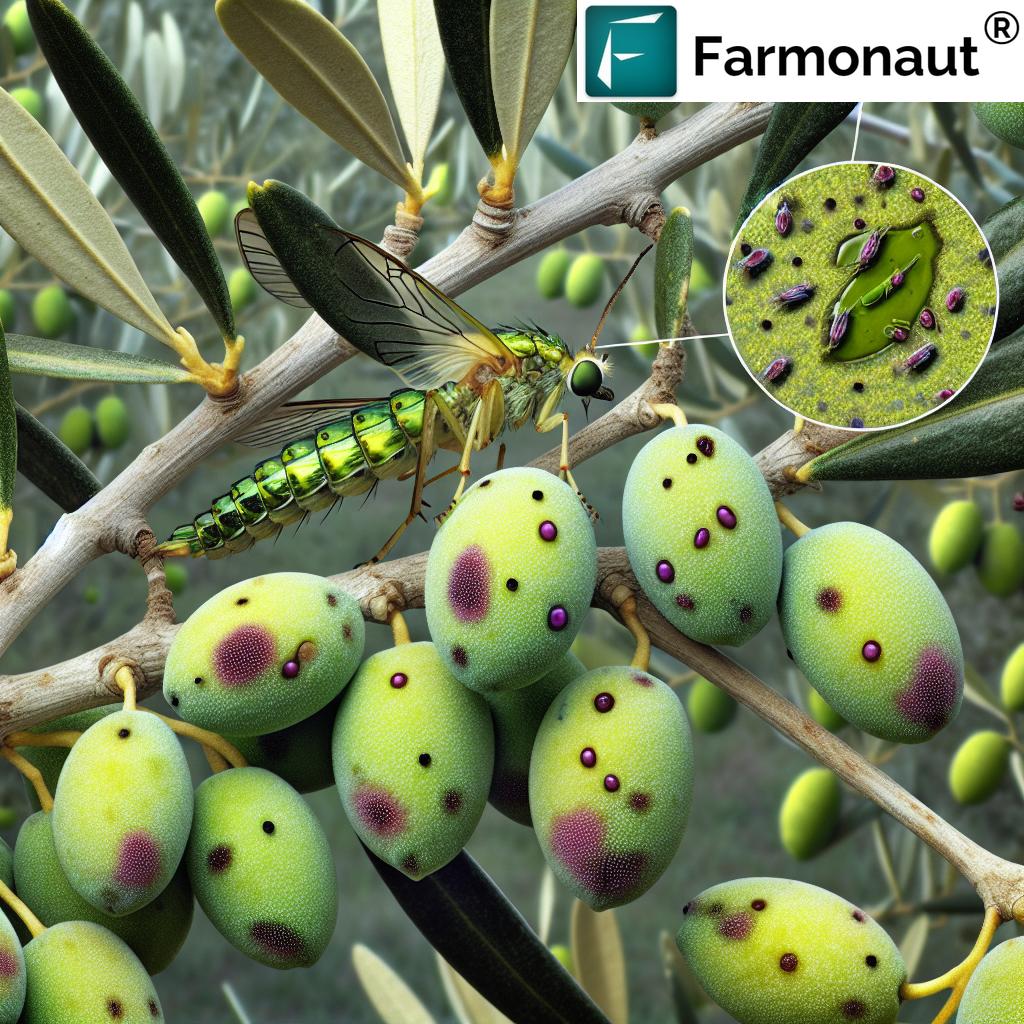Quantum Sensor in Agriculture: Precision Farming 2025
“Quantum sensors can detect soil nutrient changes with 99% accuracy, transforming precision farming predictions for 2025.”
Summary: Quantum Agriculture’s Promise for 2025 and Beyond
As global agriculture faces mounting challenges—from climate change and resource scarcity to the increasing food demand of a growing population—precision technologies take center stage. Among these revolutionary technologies, the rise of the quantum sensor in agriculture stands out as one of 2025’s biggest disruptors. With quantum sensors agriculture, the agricultural sector gains unprecedented data and actionable insights into soil health, crop monitoring, and environmental conditions, boosting yields and promoting sustainability like never before.
By utilizing quantum phenomena—specifically superposition and entanglement—quantum sensors seamlessly integrate into farming systems, allowing farmers to optimize every input and resource. Unlike conventional sensors, their extraordinary sensitivity and accuracy enable granular analysis of soil composition, moisture, nutrient levels, and crop health.
Let’s unveil how quantum sensors agriculture is revolutionizing farming in 2025 and beyond—from soil to sky, and from data to decision.
Understanding Quantum Sensors in Agriculture
To grasp the transformative effect of quantum technology in agriculture, we must first understand what quantum sensors are—and what sets them apart from conventional sensors.
What is a Quantum Sensor?
- Quantum sensors leverage quantum phenomena including superposition (where particles can exist simultaneously in different states) and entanglement (where properties of spatially-separated particles are correlated).
- This quantum behavior enables these devices to measure physical quantities—like magnetic fields, temperature, pressure, and chemical composition—with extraordinary sensitivity and unparalleled accuracy.
- They can detect minute variations in the environmental and biological parameters that directly affect crop growth, soil health, and climate resilience.
Key Advantages over Conventional Technologies
- Noise Resilience: Quantum sensors are less susceptible to noise interference than traditional devices, ensuring cleaner and more reliable data.
- Higher Sensitivity: Their ability to detect previously unattainable signals brings new insights into variabilities within soil composition, plant health, and microclimate.
- Real-Time High Resolution: Quantum sensing tech provides continuous, high-frequency monitoring of key parameters right in the field.
How Quantum Sensing Works in Agriculture
- Soil Sensors: Quantum sensors buried in the ground analyze changes in nutrient levels, mineral content, and moisture, producing an ultra-detailed soil health map.
- Crop Health Probes: Placed in or above plants, these sensors detect electromagnetic signals emitted by crops, identifying stress factors—including pests, disease onset, and nutrient deficiencies—long before visual symptoms appear.
- Environmental Networks: Quantum sensors connected via IoT (Internet of Things) networks provide localized data on temperature fluctuations, humidity, and solar radiation at micro and macro scales across the farm.
Why 2025 is the Turning Point for Quantum Agriculture
- Emerging affordability and field-ready devices are bringing quantum tech out of the lab and directly into precision farming systems across the world.
- The integration of quantum sensors with advanced data analytics and AI-based platforms (like those of Farmonaut) enables true data-driven agriculture—unlocking actionable insights in real time.
Core Applications: Quantum Sensors Agriculture in Action
The true value of quantum sensor in agriculture comes from its diverse applications—allowing farmers and agribusinesses to make fast, precise, and impactful decisions. Below, we explore how quantum sensors agriculture is revolutionizing the sector in 2025 and beyond.
1. Soil Nutrient and Moisture Analysis
- Quantum sensors dig deeper (literally!) by analyzing subtle changes in soil composition—including trace mineral levels and moisture content—minute by minute.
- This enables site-specific fertilization and precision irrigation—applying exactly what’s needed, reducing waste and environmental impact while ensuring crops receive optimal nutrition and hydration.
- Data integration with smart platforms lets farmers track soil health trends, adapt to weather fluctuations, and increase yields every season.
2. Crop Health Monitoring with Quantum Sensors
- By detecting electromagnetic signals emitted by plants, quantum sensors can identify stress factors such as pest infestations, disease onset, or nutrient deficiencies long before visual symptoms appear.
- This early detection allows for targeted interventions: reduce crop loss, use pesticides and fertilizers more efficiently, and avoid unnecessary environmental burden.
- Combined with multispectral satellite monitoring solutions (like Farmonaut’s), this data feeds into advanced AI for carbon footprinting and sustainability planning—making both the land and the environment healthier.
3. Environmental and Weather Monitoring Networks
- Quantum sensors integrated into IoT networks capture localized data—monitoring temperature fluctuations, humidity shifts, and radiation levels at the microclimate level.
- This enables tailored microclimate management to boost resilience against climate variability—enabling farmers to adapt operations dynamically and minimize risk.
- These sensors help automate responses to weather stress by coordinating irrigation, temperature shields, or even the deployment of advanced fleet management solutions—making the whole farm system responsive and efficient.
4. Blockchain Traceability & Supply Chain Integrity
- In quantum-powered farming, traceability solutions—like blockchain product traceability—build trust and secure food supply chains by confirming authenticity and sustainability from soil to shelf.
- Coupled with quantum sensor data, this increases transparency and limits agricultural fraud.
5. Precision Resource Management & Input Optimization
- Farmer dashboards and large-scale farm management tools consume quantum sensor data to automate input allocation (water, fertilizers, pesticides), slash resource waste, and enhance profitability while protecting the environment.
“By 2025, farms using quantum sensors achieve up to 20% higher crop yields through enhanced real-time data analysis.”
Comparative Table: Quantum vs. Conventional Agricultural Sensors
| Sensor Type | Measured Parameter | Data Accuracy | Data Frequency | Impact on Yield | Environmental Benefit | Adoption Cost |
|---|---|---|---|---|---|---|
| Quantum Sensors | Soil moisture, nutrient levels, crop health, environmental stressors | Up to 99% | Continuous (hundreds per hour) | +10–20% increase (2025 estimate) | Up to 35% resource reduction (water, fertilizer) | High (but dropping by 2025) |
| Conventional Sensors | Single parameter (soil moisture or temperature) | 70–85% | Intermittent (hours or daily) | +2–5% increase (2025 est.) | Limited (<10% reduction) | Low to Medium |
Extraordinary Benefits of Quantum Technology in Agriculture
- Unmatched Sensitivity & Early Warning: Quantum sensors’ ability to detect minute variations and trace signals in soil and crops lets growers respond months before any loss occurs—increasing both yields and sustainability.
- Resource Optimization: Fertilizers and irrigation can be applied precisely where and when they are needed—reducing cost, waste, and the risk of environmental damage (such as groundwater pollution).
- Boosted Yield, Reduced Input: Studies predict farms with widespread quantum sensor integration will see up to 20% higher yield and up to 35% reduced input usage by leveraging real-time data.
- Adaptive Climate Resilience: Detailed environmental monitoring arms farmers with the insights needed to weather climate change, reducing loss risk and optimizing land use.
- Data Backbone for Smart Farms: Quantum sensors are vital to powering AI-driven advisories and integrated blockchain traceability systems, enabling digital transformation in agriculture at every scale.
- Scalable for All Farmers: Via satellite-powered platforms (like Farmonaut), benefits are democratized for both large and small holders, bringing cutting-edge technology to every field.
2025 Use-Cases: Real-World Examples
Today’s quantum agriculture deployments highlight the practical applications for farmers worldwide:
- Precision fertilizer application: Sensors pinpoint nutrient deficiencies at sub-meter resolution, enabling targeted treatment and reducing total fertilizer input.
- Smart irrigation: Continual moisture and temperature monitoring ensures optimal hydration without overuse of water resources.
- Climate-smart risk management: Early environmental stress detection (including heat, drought, and disease) means farmers can adapt before damage occurs.
- Yield forecast optimization: Vast, granular datasets feed AI yield models to guide planting, harvesting, and market strategy.
- Supply chain transparency: Quantum-sensor-driven tracking plus blockchain assures buyers and regulators of authentic, sustainable sourcing.
Integration with Quantum Computing in Agriculture
The integration of quantum computing in agriculture unlocks a new era of holistic decision-making. Here’s how these technologies unite for advanced precision farming:
- Data Volume: Quantum sensors generate terabytes of real-time data from every corner of the field—analytics at this scale demands next-gen computation.
- Quantum Computing: Unlike traditional servers, quantum computing platforms can rapidly process complex, multi-variable agricultural datasets, providing modelling, predictive analytics, and input optimization in seconds.
- AI Synergy: Quantum-powered data feeds AI tools (such as Farmonaut’s Jeevn AI) to recommend day-to-day decisions, anticipate weather fluctuations, and forecast yield outcomes with triple-digit gains in accuracy.
These advances make digital farm management immersive—from recommending fertilization schedules to monitoring carbon footprinting, with seamless data integration across mobile and desktop platforms. For tailored developer integration, use the Farmonaut API or refer to our API developer docs for satellite weather and agri-intelligence.
Challenges, Cost, and the Path Forward
- Technology Maturity: While quantum sensor in agriculture is rapidly advancing, some devices remain in pre-commercial stages and require further ruggedization for extreme agricultural field conditions (heat, moisture, dust).
- Adoption Cost: The cost of quantum sensors is historically high, but industry experts predict a sharp decrease by 2025 due to mass production and demand-driven market expansion.
- Infrastructure Integration: Integrating quantum sensors into existing farm networks demands compatibility with other IoT devices, communication protocols, and skilled workforce training for use and maintenance.
- Data Overload & Interpretation: Processing vast data streams requires user-friendly software and seamless pipeline into AI-driven platforms to avoid analysis paralysis.
- Regulatory and Security: As quantum sensing and data become integral, regulatory policies around data privacy, interoperability, and digital security will be crucial in the agricultural sector.
Despite such challenges, ongoing research, pilot projects, and increasing integration with digital platforms pave the way for quantum sensors to become a staple in smart farming systems by 2025 and beyond.
Farmonaut: Empowering Sustainable, Data-Driven Quantum Agriculture
At Farmonaut, we are dedicated to democratizing agricultural innovation—making advanced satellite-driven insights affordable and accessible across the globe. While not a manufacturer of quantum hardware or farm machinery, we pioneer accessible, satellite-based and AI-powered crop monitoring, resource management, and blockchain traceability solutions—laying the digital groundwork for quantum technology in agriculture.
- Satellite Monitoring: We harness multispectral satellite imagery to map vegetation health (NDVI), soil composition, and field variability at regional and local levels.
- AI Advisory (Jeevn AI): Our real-time AI-driven advisories empower farmers and businesses to make smarter decisions—integrating data streams from a multitude of digital sensors.
- Blockchain Traceability: Transparency and traceability in supply chains are enabled through robust, blockchain-powered solutions for agriculture and related sectors.
- Environmental Tracking: Sustainability-first approaches like carbon footprinting ensure that every field moves toward environmental responsibility. Learn more about how carbon tracking supports sustainable land management here.
- API & Platform Accessibility: Our service is available via Android, iOS, web, and API—helping individuals, businesses, and governments optimize operations of all sizes, from a single farm to continent-wide fleets.
- Financing Support: Satellite-based verification systems enable crop loan and insurance approval, improving financial inclusion for agricultural stakeholders.
Want to integrate quantum-aligned data streams into your decision-making pipeline? Explore
Farmonaut’s API
or check the full API developer docs.
Ready for a scalable platform? Try our large-scale farm management dashboard or request crop/plantation/forest advisory on your time.
Farmonaut Subscription Packages
Frequently Asked Questions: Quantum Sensor in Agriculture
-
What is a quantum sensor in agriculture?
A quantum sensor in agriculture is a device that uses quantum physics principles—such as superposition and entanglement—to measure physical and chemical properties (like soil nutrients, moisture, crop stress signals) with greater sensitivity and accuracy than traditional sensors. -
How do quantum sensors agriculture systems improve yields?
By offering real-time, high-resolution data on critical variables (soil, crop, weather), farmers can identify and address issues before they impact yields, enabling targeted input application and stronger, healthier crops. -
Are quantum sensors available for widespread deployment in 2025?
By 2025, the cost and field-readiness of quantum sensors are expected to improve, making them increasingly accessible for commercial agriculture globally. -
How does quantum technology in agriculture support sustainability?
Quantum sensors optimize input use, reduce waste and environmental damage, and integrate with sustainability metrics (like carbon footprinting) to promote regenerative agriculture practices. -
Can Farmonaut’s platform process quantum sensor data?
While we focus on satellite-based, AI-enhanced, and IoT-integrated monitoring, our data-driven platform is compatible with a broad array of sensor data and is poised to align with quantum sensor data streams as the market matures. -
Does Farmonaut manufacture quantum sensors?
No. Our solutions are built around accessible, digital, satellite, AI, and blockchain-based technologies for monitoring and management, not manufacturing of physical sensors or hardware. -
How can I access Farmonaut’s farm management services?
Download our mobile apps (Android / iOS) or visit our web platform to start.
Conclusion: The Quantum Leap into the Future of Agriculture
As we approach 2025, quantum sensor in agriculture will symbolize the next quantum leap in farming technology. By enabling unprecedented precision, higher yields, and pre-emptive resource allocation, this innovation is set to help the world contend with climate change, food scarcity, and the surging demand for sustainability.
Through advanced data integration, management systems, and AI-driven advisories like the ones we deliver at Farmonaut, quantum agriculture is no longer science fiction—it’s a bold, practical strategy for global food security and environmental stewardship. As quantum sensors agriculture becomes more accessible, all farmers, businesses, institutions, and even governments will gain the actionable insights needed for the most effective and sustainable production strategies yet.
Join us as we shape this data-driven, quantum-powered future for agriculture—delivering solutions that benefit our fields, our food systems, and our planet beyond 2025.













